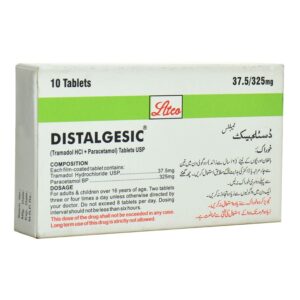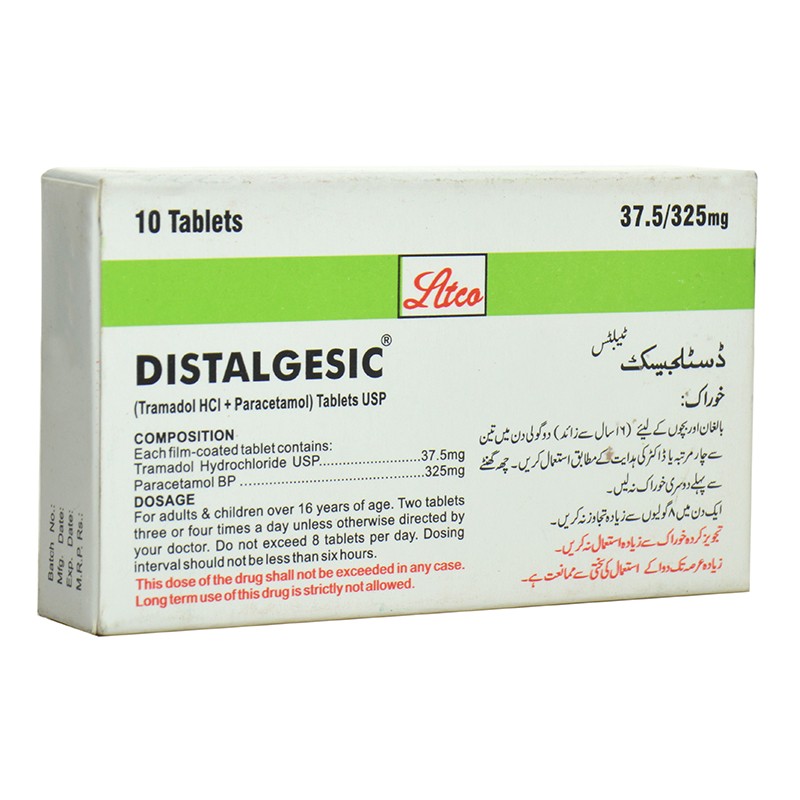
When you suffer from moderate to severe pain, finding a strong but safe painkiller is important. One such medicine that has been used for years is the Distalgesic tablet. Though it is not as commonly used today due to safety concerns, it is still important to understand what it does and how it works if you come across it. In this article, we’ll explain the main Distalgesic tablet uses, benefits, dosage, and possible side effects in simple, easy-to-understand words.
What is Distalgesic Tablet?
Distalgesic is a pain relief tablet that was previously prescribed to treat moderate to severe pain. It is a combination medicine that contains two main ingredients:
-
Dextropropoxyphene – a weak opioid painkiller
-
Paracetamol (Acetaminophen) – a commonly used pain-reliever and fever reducer
This combination made Distalgesic effective for treating stronger pain that couldn’t be relieved by paracetamol alone.
🛑 Important Note: In many countries (like the UK and USA), Distalgesic has been withdrawn or banned due to safety concerns, especially the risk of overdose and heart problems. Always consult your doctor before using this medicine.
Distalgesic Tablet Uses
The main Distalgesic tablet uses were related to treating pain that is more than mild, such as:
1. Back Pain
-
Helpful for people with chronic lower back or upper spine pain.
2. Post-surgery Pain
-
Prescribed after surgeries to relieve short-term pain.
3. Joint Pain or Arthritis
-
Used in conditions like osteoarthritis or rheumatoid arthritis to reduce pain and improve mobility.
4. Muscle Pain or Injury
-
Could help in sprains, muscle pulls, or other painful soft tissue injuries.
5. Toothache or Dental Pain
-
Sometimes used for severe dental pain not responding to standard painkillers.
6. Cancer-Related Pain
-
Used occasionally as part of pain management in cancer patients.
How to Take Distalgesic
Always take Distalgesic exactly as prescribed by your doctor. Do not self-medicate, especially with opioid combinations.
General Instructions:
-
Dosage: Usually 1 to 2 tablets every 4–6 hours
-
Maximum: Do not exceed 8 tablets in 24 hours
-
With or without food: Can be taken with food to reduce stomach upset
-
Do not crush or break the tablet unless advised
How It Works
Distalgesic works in two ways:
-
Paracetamol reduces fever and pain signals to the brain.
-
Dextropropoxyphene works on the central nervous system (brain and spinal cord) to block pain perception.
Together, they help provide more powerful and longer-lasting pain relief than paracetamol alone.
Side Effects of Distalgesic Tablet
As with all medicines, Distalgesic may cause side effects. Some are mild, while others can be serious, especially in high doses or long-term use.
Common Side Effects:
-
Drowsiness or tiredness
-
Dizziness
-
Nausea or vomiting
-
Constipation
-
Dry mouth
Serious Side Effects:
-
Breathing difficulties
-
Irregular heartbeat
-
Liver damage (due to too much paracetamol)
-
Addiction or dependence (due to opioid content)
-
Confusion or hallucinations (rare)
🚨 Seek medical help immediately if you feel chest pain, difficulty breathing, or signs of overdose like fainting or extreme drowsiness.
Who Should Avoid Distalgesic?
Do not use Distalgesic if you:
-
Have a history of drug addiction or alcohol abuse
-
Have liver disease or kidney problems
-
Are using other opioid medications
-
Are pregnant or breastfeeding
-
Are below 12 years of age
-
Have respiratory issues like asthma or COPD
Also, avoid drinking alcohol while using this medicine as it increases the risk of liver damage and sedation.
Safer Alternatives
Because of the safety risks, doctors now recommend safer options for pain relief such as:
-
Paracetamol alone
-
Ibuprofen or other NSAIDs
-
Codeine (in low doses) — under doctor supervision
-
Prescription-strength painkillers with monitoring
Final Thoughts
Distalgesic Tablet was once a popular painkiller used for various types of moderate to severe pain, especially when other pain medicines were not strong enough. However, due to the risk of overdose, heart problems, and addiction, its use is now limited or banned in many countries.
If you’re experiencing strong or long-term pain, always talk to a qualified doctor to choose a safe and effective pain relief option.


